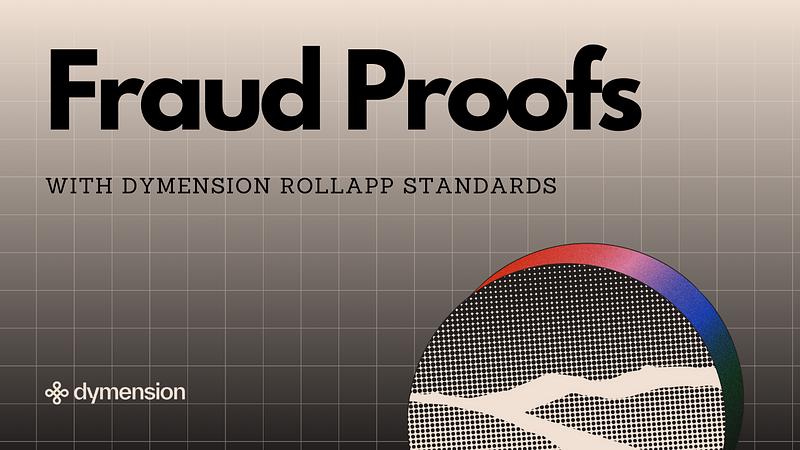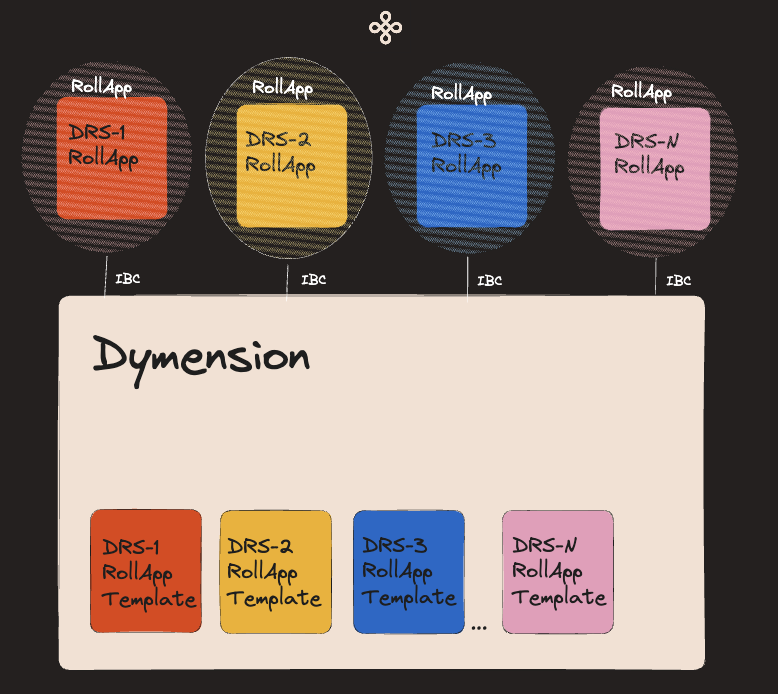Introducing Fraud Proofs with Dymension RollApp Standards
Dymension is a blockchain designed to secure and connect RollApps (ultra-fast and easily deployable blockchains). As a settlement layer…

Dymension is a blockchain designed to secure and connect RollApps (ultra-fast and easily deployable blockchains). As a settlement layer, Dymension needs the ability to verify RollApps with ZK proofs or fraud proofs. To do so Dymension standardizes core components of the network.
Dymension abstracts away blockchains with the use of proper standards:
- IBC — bridging standard: Using a single bridging protocol as the only canonical bridge. Without different security assumptions bridges will be abstracted away.
- EVM — address standard: Enabling easy interoperability, compatibility and integration with popular crypto tooling.
Today we announce a new standard:
- DRS — Dymension RollApp Standards (DRS) with Fraud Proofs: Enabling verification of RollApp state and standard chains.
DRS is the RollApp equivalent of ERC tokens. DRS unlocks rollups with fraud proof capability making them non-custodial, secure, and standardized.
Dymension RollApp Standards
Dymension maintains an onchain registry for governance-approved RollApp binaries (execution environments) which are referred to as Dymension RollApp Standards (DRS).
Usually, a DRS is simply a chain template with a popular VM (e.g. EVM = DRS-1, WASM = DRS-2, SVM = DRS-#), but custom templates can also be built with the Dymension RollApp Development Kit and become a new DRS. For example, developers can build a state-of-the-art derivative exchange chain built specifically for low latency trading and submit it onchain. New DRS are approved by Dymension’s decentralized governance and enshrined into the Dymension blockchain code.
Once a DRS is approved and enshrined, anyone can permissionlessly use that standard to deploy a RollApp with only a few clicks while getting the full security of the Dymension blockchain. Enshrining DRS eliminates the need for multi-sig governed smart contracts which prevent rollups from inheriting base layer security due to their custodial nature.

Fraud Proofs
Dymension RollApp Standards enable Dymension to verify the state transition of a RollApp.
This work is produced in collaboration with our partners at Celestia and the Rollkit team!
Fraud proofs are transactions that claim a disagreement with the published state by a RollApp sequencer. Fraud proofs are easily generated by full nodes that verify RollApps (e.g. market makers or any person that wants to verify the RollApp).
How does it work:
- Full node detects fraud, panics and generates a fraud proof.
- The fraud proof is then submitted as a transaction to the Dymension blockchain.
- Dymension uses the embedded DRS code and the fraud proof submitted to run the disputed transaction.
- According to the proof result, Dymension slashes the sequencer or full node.
Try it yourself!
Provided here is a docker container with a working fraud proof process! Run your own sequencer fraud, catch it with a different full node, and have the Dymension node verify it.
Submitting a fraud proof is permissionless. It requires a deposit in DYM as do RollApp sequencers which bond DYM that may be slashed and rewarded to the fraud prover. This fraud proof mechanism is in the final testing and auditing stages and will be supported as part of the upcoming upgrades to Dymension.
Next steps
With Dymension’s upcoming 2D upgrade innovative concepts will be introduced that make Dymension scalable and secure. These concepts include eIBC (escrow IBC) which plays a critical role in Dymension, enabling withdrawals over IBC from rollups while making sure there is an honest full node at all times for RollApps.
Learn more about Dymension by visiting the documentation:
https://docs.dymension.xyz/learn/dymension/security/standards

